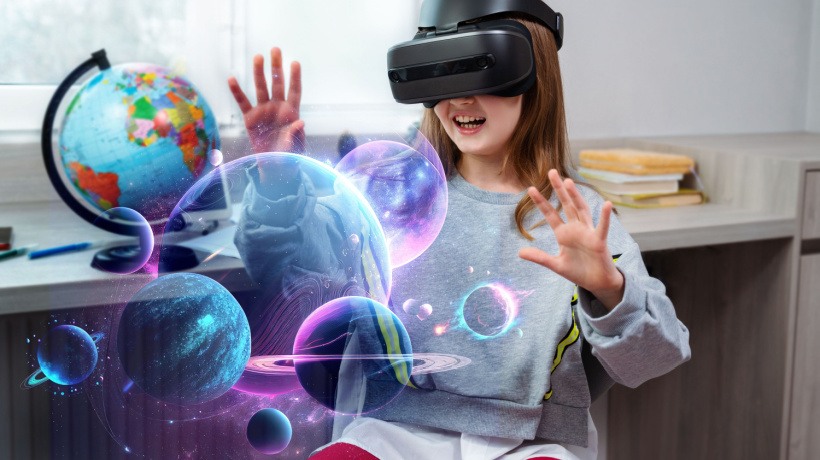Blitz News Digest
Stay updated with the latest trends and insights.
Augmented Reality: Where Fantasy Meets Reality
Discover how augmented reality blurs the line between fantasy and reality, transforming everyday experiences into extraordinary adventures!
Exploring the Future: How Augmented Reality is Changing Our World
As we move deeper into the 21st century, augmented reality (AR) is emerging as a transformative technology that is reshaping how we interact with our environment. Unlike virtual reality, which immerses users in a completely digital world, AR overlays digital information onto the real world, creating a harmonious blend of both realms. Industries such as education, healthcare, and retail are already harnessing the power of augmented reality to enhance user experiences, streamline processes, and improve learning outcomes. For instance, in education, AR apps allow students to visualize complex concepts, making learning more engaging and interactive.
Looking ahead, the potential applications of augmented reality are virtually limitless. Future developments may include advanced AR applications in urban planning, enabling architects to present their designs in real-world contexts, or in the automotive industry, where AR dashboards could provide drivers with real-time data and navigation instructions. Furthermore, with the ongoing advancements in smartphone technology and wearable devices, accessing augmented reality experiences will become increasingly seamless for users. As we explore the future of this remarkable technology, it is clear that augmented reality will play a pivotal role in shaping the way we live, work, and interact.

The Science Behind Augmented Reality: Understanding the Technology
Augmented Reality (AR) combines the digital and physical worlds, enhancing our perception of reality through technology. At its core, AR overlays digital information—such as images, sounds, or text—on the real world, allowing users to interact with both simultaneously. This integration is achieved through various hardware components like cameras, sensors, and displays, which capture and visualize the surrounding environment. The software behind AR utilizes computer vision, simultaneous localization and mapping (SLAM), and depth tracking to facilitate real-time interactions, making the experience immersive and dynamic. By understanding the fundamental technologies that power AR, we can appreciate its transformative impact on various industries, from gaming to healthcare.
At the heart of augmented reality is the concept of marker-based and markerless systems. Marker-based AR relies on visual markers—like QR codes or specific images—to trigger the display of digital content when scanned by a device. In contrast, markerless AR utilizes advanced algorithms to identify environments without the need for specific markers, allowing for more flexible and versatile applications. Technologies such as smartphones, tablets, and specialized AR glasses serve as the primary interfaces through which users engage with AR content. As these technologies evolve, AR's potential to enhance user experience across education, training, and entertainment continues to expand, making it a fascinating field of study and innovation.
5 Ways Augmented Reality is Transforming Everyday Life
Augmented reality (AR) is gradually becoming a vital part of our everyday lives, enhancing our interactions with the world around us. One notable way AR is transforming daily experiences is through navigation. With AR-enabled apps, users can now receive real-time, directional overlays on their smartphones, making it easier to find their way in unfamiliar places. This technology significantly improves convenience and reduces the chances of getting lost. Besides navigation, AR is also revolutionizing the shopping experience by allowing customers to visualize products in their own space before making a purchase.
Furthermore, education is another domain where AR is making significant strides. Educational institutions are utilizing AR to create immersive learning experiences, enabling students to interact with 3D models of complex subjects, such as anatomy or astronomy. This hands-on approach not only enhances engagement but also aids in better retention of information. Lastly, AR is enhancing social interactions through apps that allow users to share virtual experiences and memories, bridging the gap between the digital and physical worlds. By integrating AR into everyday activities, we are witnessing a remarkable transformation in how we live and interact.